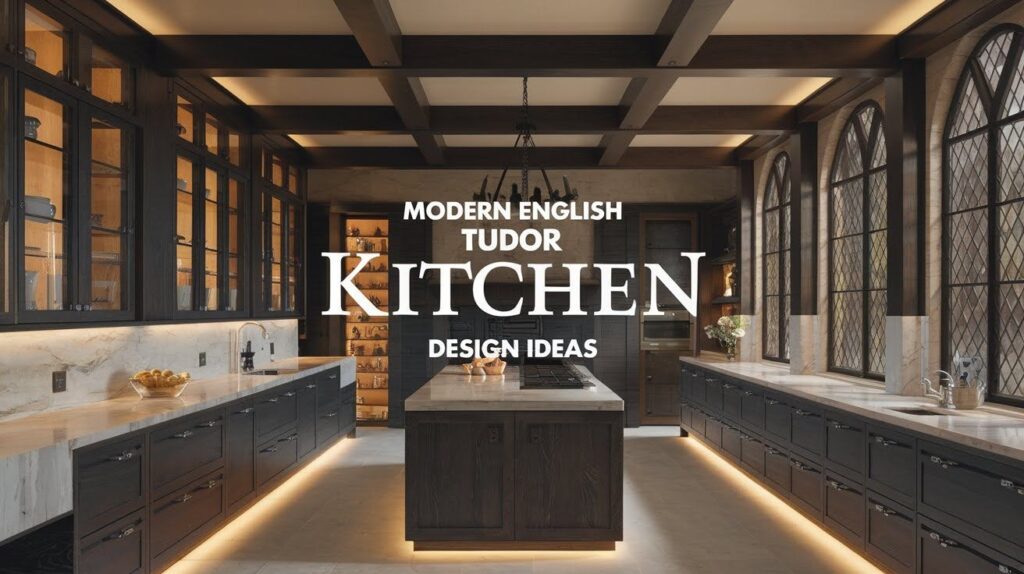For a long time, I’ve been a fan of English Tudor kitchens because they seem to mix the charm of a bygone period with the essentials of modern living.
I will take you through it all. I will explain what makes Tudor kitchens special, how to modernize them without losing their core, and what matters most.
We will cover cabinets, color, layout, and finishes. By the end of this article, you’ll know how to create a modern English tudor kitchen.
This style will fit your lifestyle after the creation. Make your kitchen beautiful and functional.
What Defines an English Tudor Kitchen
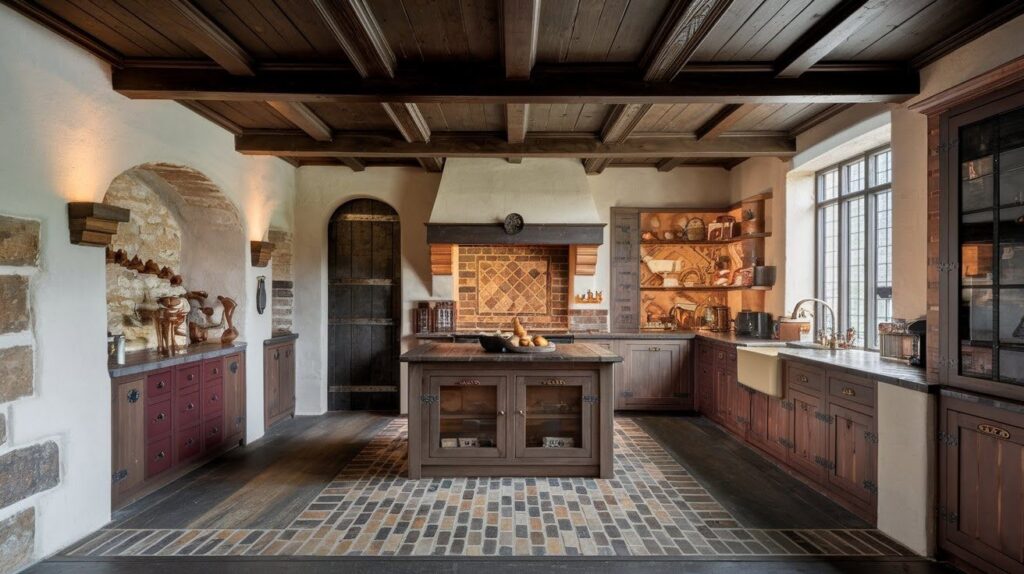
Classic Tudor style combines historic charm with functional warmth.
Tudor homes feature steep gables, timber framing, and rustic materials that age gracefully. Dark wood beams cross white plaster walls while stone adds weight and permanence.
In the kitchen, you’ll find exposed ceiling beams, arched doorways, and wrought-iron accents on hardware and fixtures.
The color palette stays earthy with warm browns, deep reds, and golden creams. These spaces feel cozy and inviting, designed for gathering, not just cooking.
Modernizing the English Tudor Kitchen
Update your Tudor kitchen without losing its soul.
Blending Old-World Craftsmanship with Modern Function
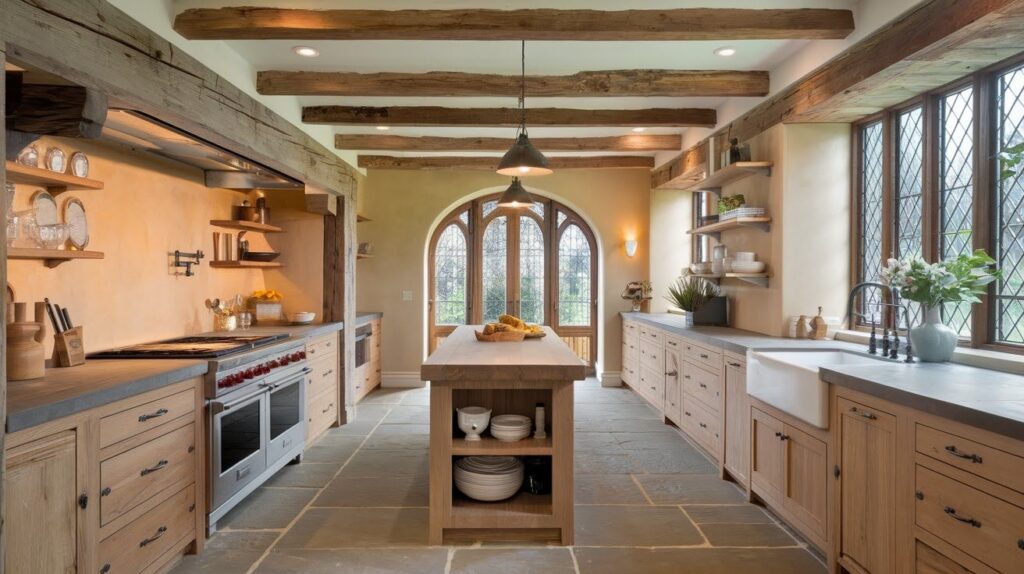
You don’t have to choose between charm and convenience. Update materials while respecting period details, use reclaimed wood with similar patina and natural stone with modern sealants.
Hide energy-efficient appliances behind custom cabinetry for seamless integration.
Open Layouts and Better Lighting
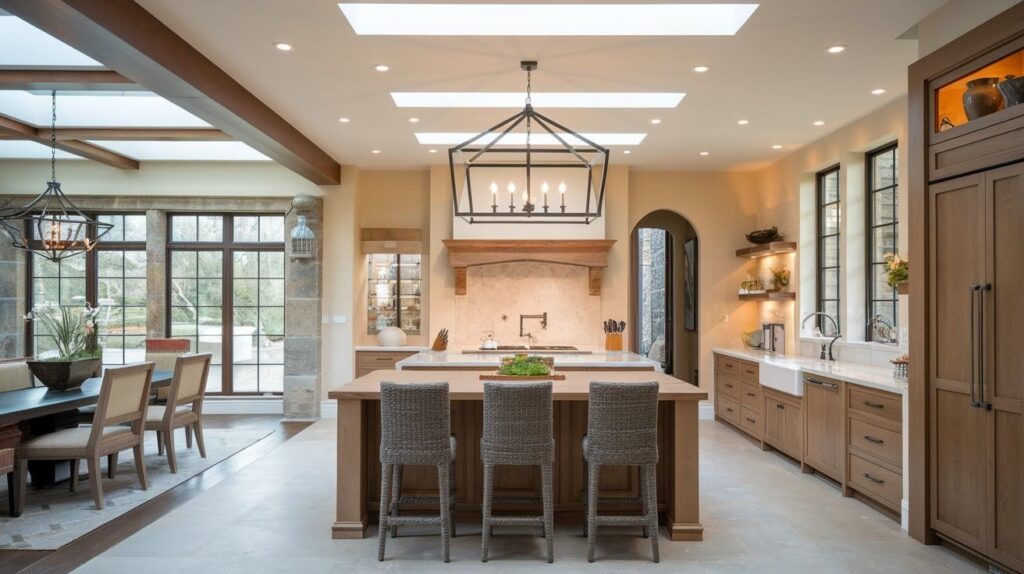
Remove walls to improve flow between kitchen and dining areas. Enlarge windows or add skylights for natural light.
Use recessed lighting for tasks and statement pendants with blackened metal frames over islands.
Mixing Materials for Depth
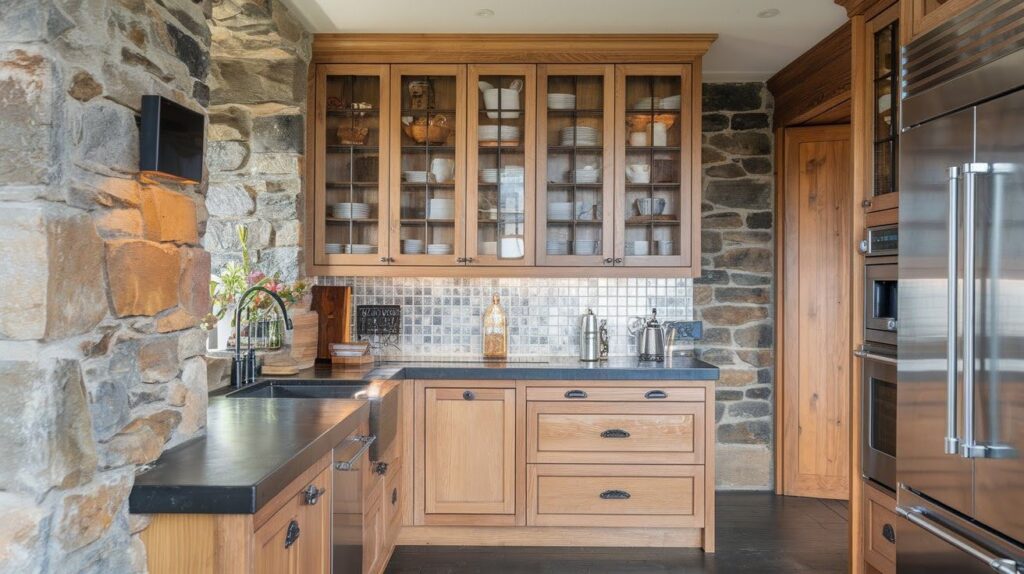
Pair rough stone walls with stainless steel appliances. Combine warm wood cabinetry with glass-front uppers.
Matte black fixtures pop against honey-toned oak, creating a conversation between past and present.
Design Elements for Your Tudor Kitchen
Choose materials and details that honor the period.
Cabinetry and Millwork
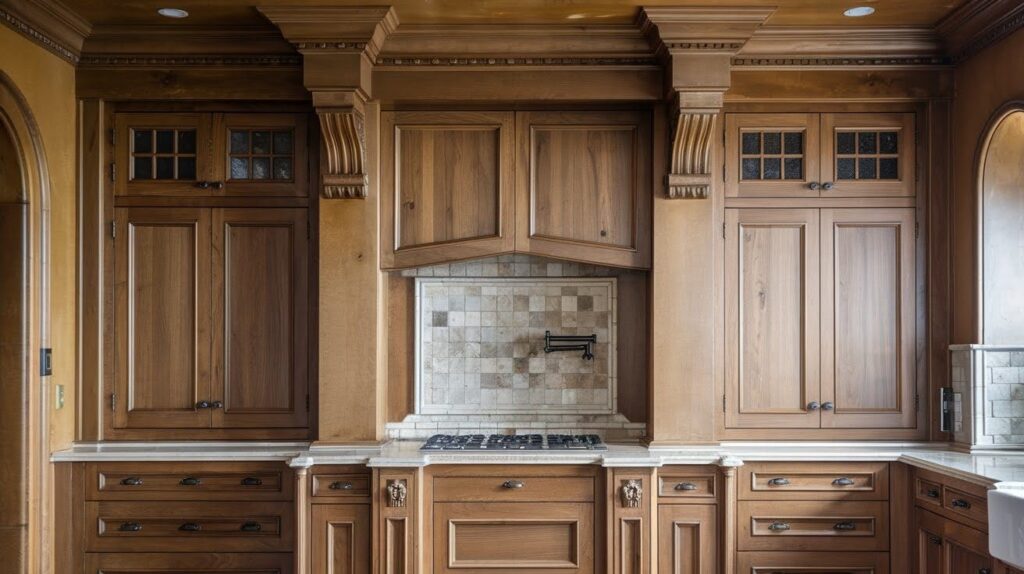
Choose recessed-panel doors with rich walnut or cherry stains. Add custom moldings, crown details, and decorative corbels.
Invest in millwork to get the Tudor character right.
Countertops and Backsplashes
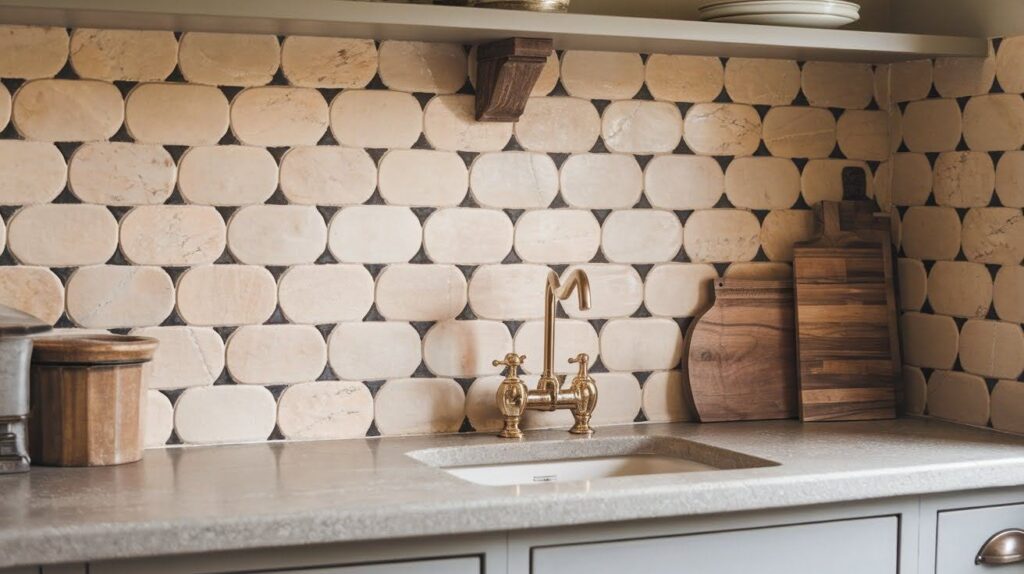
Use natural stone like granite or quartzite for countertops. Add handmade tiles in irregular sizes or medieval-inspired patterns for backsplashes.
Imperfection reads as craftsmanship here.
Flooring Choices
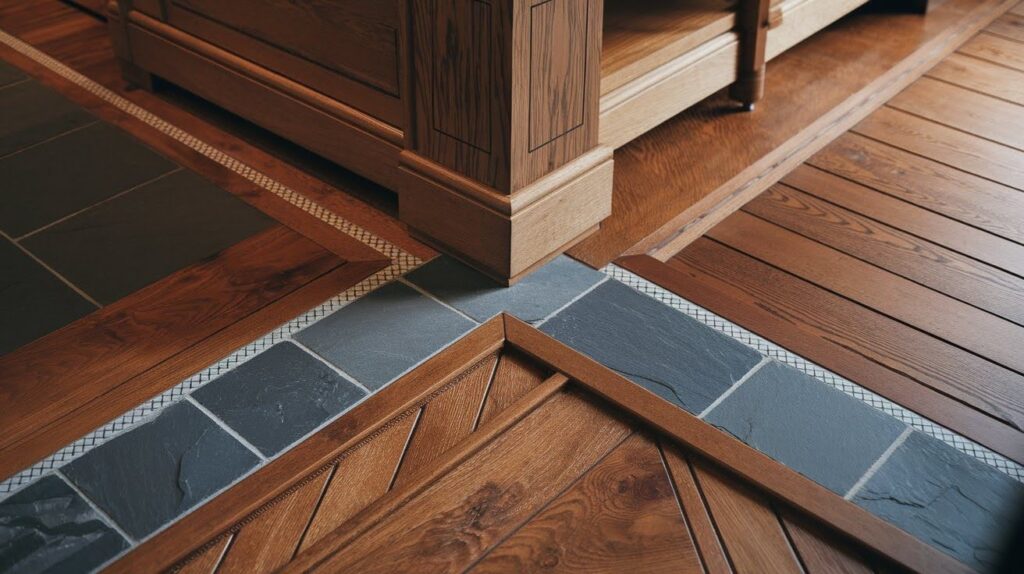
Dark hardwood in oak, walnut, or hickory works beautifully. Slate tiles or textured terracotta add authentic warmth. Consider patterned inlays at thresholds for subtle interest.
Lighting Fixtures and Hardware
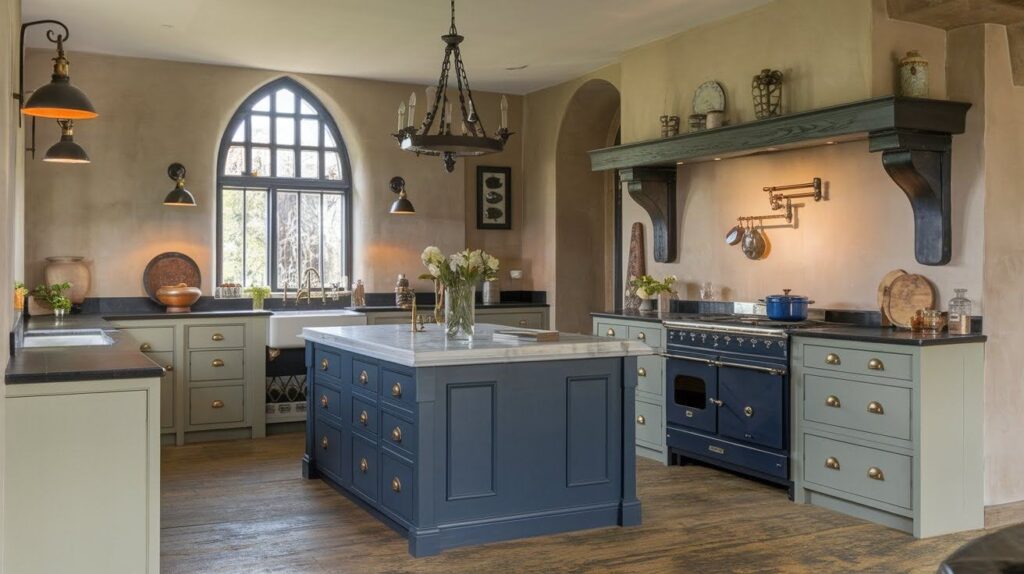
Use blackened brass pulls, wrought iron pot racks, and antique finishes on faucets. Add lantern-style pendants over islands and wall sconces flanking the range.
Color Palettes for Modern Tudor Kitchens
Balance rich historic tones with fresh modern accents.
Traditional Meets Contemporary
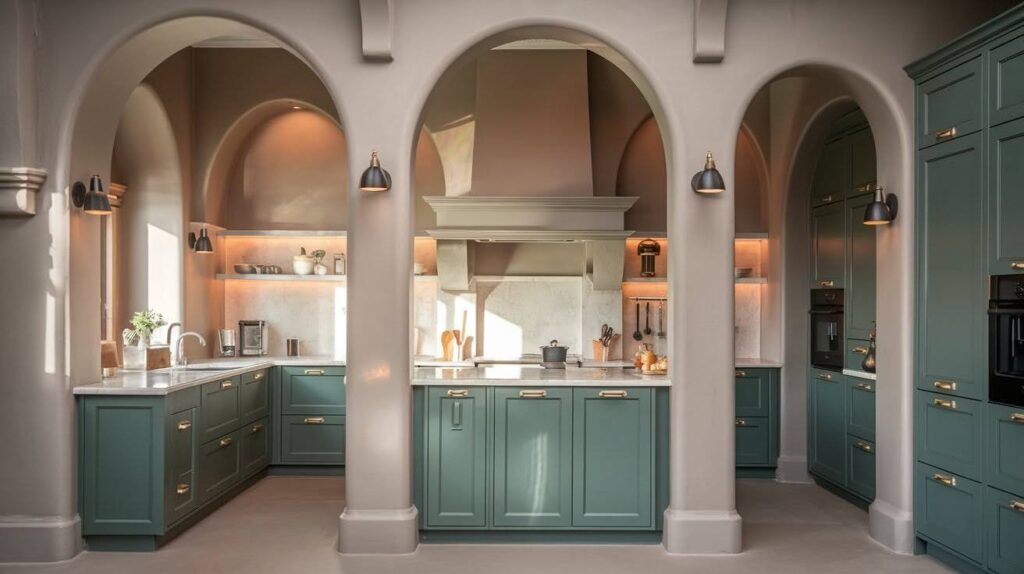
Forest green cabinetry pairs well with cream walls. Warm taupes and soft grays let architectural details shine.
Add brushed gold or matte black accents for contemporary touches.
Paint and Finishing Tips
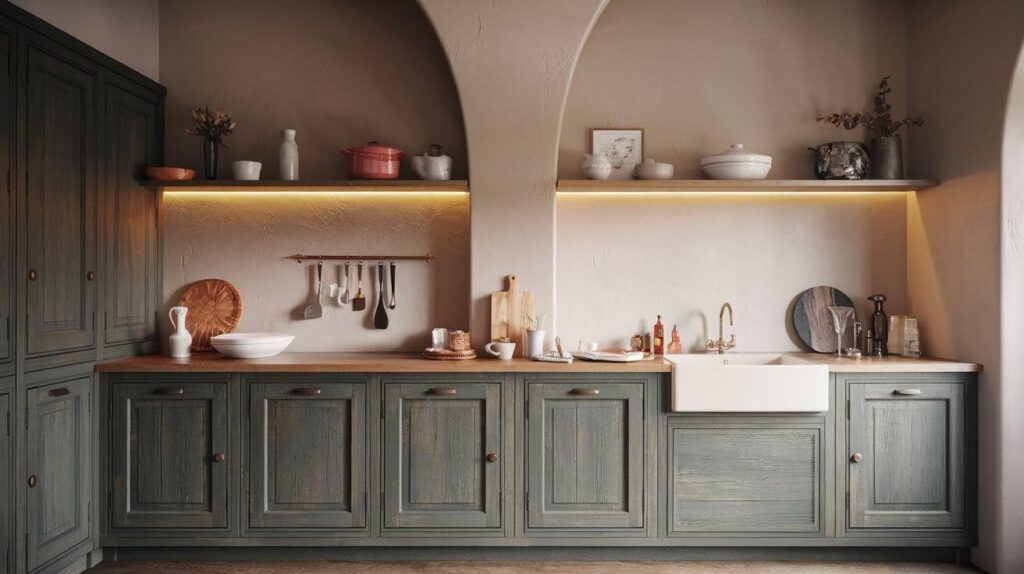
Paint upper walls in lighter shades while keeping rich colors on lower cabinetry. Use hand-rubbed stains and glazing for depth.
Choose textured wall finishes like limewash for authenticity.
Layout and Space Planning
Smart planning makes Tudor kitchens work for modern living.
Small kitchens benefit from galley or L-shaped layouts. Mid-sized spaces can add a small island for prep and seating.
Large kitchens accommodate full-sized islands, breakfast nooks, and butler’s pantries. Maintain flow with pocket doors and smart island placement.
Use pull-out organizers and corner solutions to maximize storage.
Finishing Touches and Decor
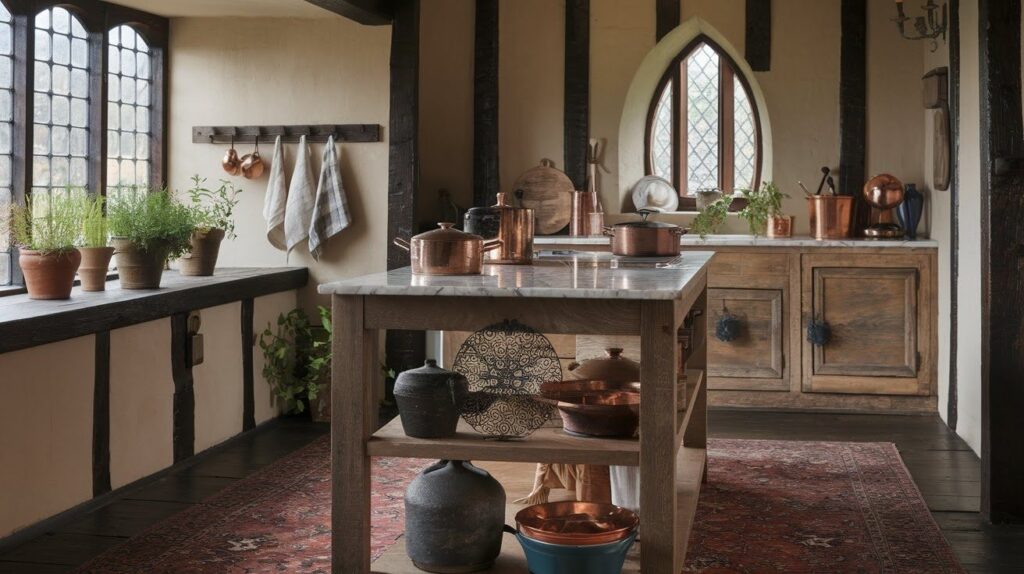
Add character with carefully chosen accessories and details.
Hunt for antique pieces like copper pots and ceramic crocks to display. Add Tudor-inspired accessories such as wrought-iron trivets and pewter chargers.
Soften surfaces with linen towels and vintage rugs. Place herbs in pottery containers on windowsills.
Choose quality over quantity, let architectural features lead while accessories complement.
Conclusion
An English Tudor kitchen is a fusion between craftsmanship and comfort.
Picture cooking in this space. It is a marriage of old-world charm alongside modern convenience.
It has its own personality, brimming with life, waiting to tell your story. These ideas offer inspiration for a small change or a total remodel.
Write your Tudor kitchen dreams in the comments. Visit our site for more Tudor kitchen resources.
Perhaps you are closer to your dream kitchen than you think. You may already know this.
Frequently Asked Questions
Can I add modern appliances to a Tudor kitchen without ruining the style?
Yes, choose panel-ready appliances that hide behind custom cabinetry. Stainless steel also works if you balance it with dark wood and wrought-iron accents.
What’s the best way to lighten a dark Tudor kitchen?
Paint upper walls and ceilings in cream or soft white while keeping rich colors below. Add recessed lighting and enlarge windows where possible.
Are Tudor kitchens expensive to create?
Costs vary based on materials and scope. Focus your budget on quality cabinetry and millwork first, then save by mixing vintage finds with new pieces.
What flooring works best in a modern Tudor kitchen?
Dark hardwood in oak or walnut captures authentic Tudor character. Slate tiles or textured terracotta also work beautifully for this style.
How do I avoid making my Tudor kitchen feel like a museum?
Mix historical elements with contemporary touches like matte black fixtures. Keep the space functional and don’t over-decorate with too many antiques.

